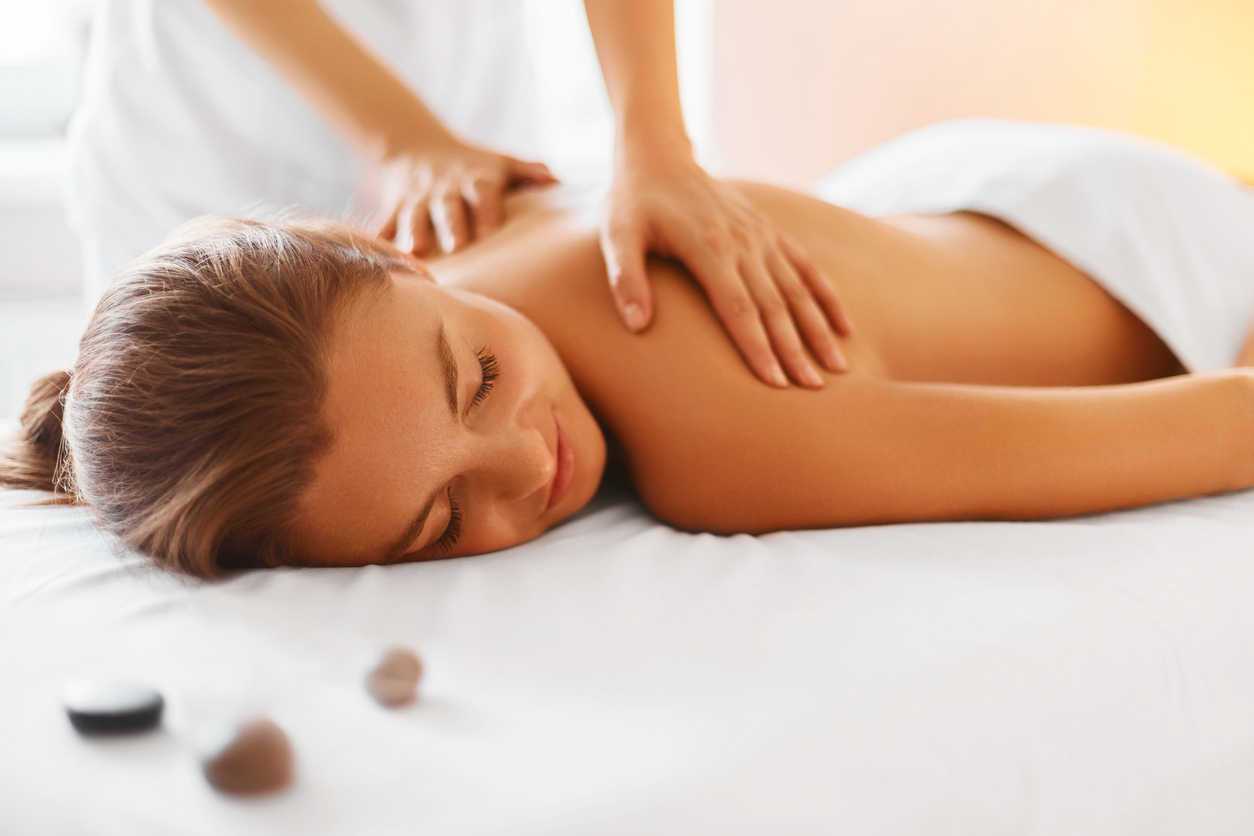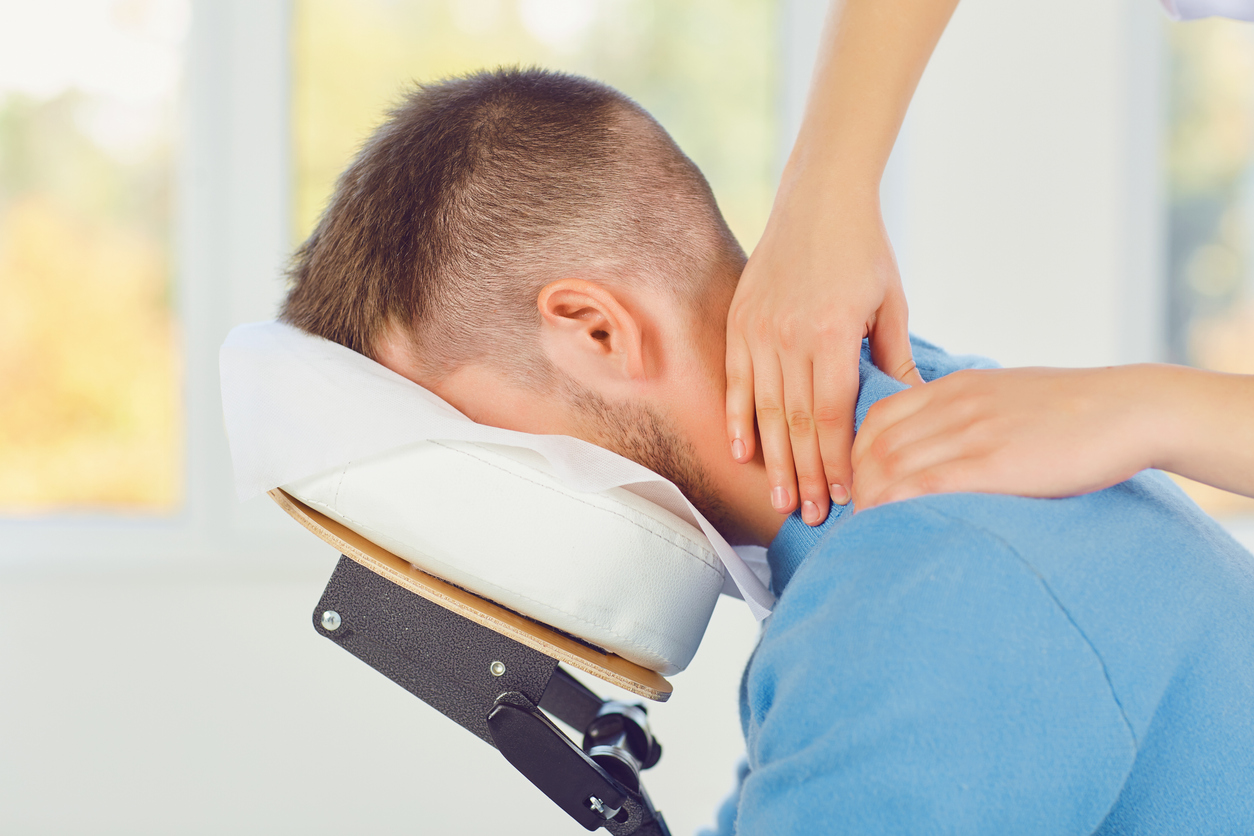The ultimate guide to
massage therapy in Canada
Benefits of massage therapy are becoming widely known, more people are booking appointments to relieve pain and provide relaxation.
In one survey, almost half of Canadian respondents said they tried a massage.
If you’re considering a session with a massage therapist, you might wonder if it’s the right choice for your condition. And, if so, what type of massage should you choose and how do you find a massage therapist near you?
Even if you don’t have a physical concern, an increasing number of Canadians are prioritizing massage therapy for self-care. Treating yourself to a massage can help you unwind from day-to-day stress. During a session, you have no choice but to relax without distraction.
In this guide, we’ll cover everything you need to know about registered massage therapy.
Frequently Asked Questions


What is Massage Therapy? Massage Definition
Massage is the manipulation of tissues. There are two main types of massages: Therapeutic and relaxation (non-therapeutic).
The goal of a relaxation massage is to make the person feel good and relaxed. On the other hand, massage therapy manipulates tissues, muscles, ligaments, and joints to relieve soreness. After a session or multiple sessions, your pain should improve.
Therapeutic massage works by targeting muscle areas that are tight or sore (myofascial trigger points, also called knots). Through different hands-on techniques, tissues start to relax and circulation improves.
What is a Registered Massage Therapist (RMT)?
An RMT, or a registered massage therapist, is someone licensed to give massages. These practitioners have met educational requirements and have registered with their provincial governing body.
RMTs are not the same as unlicensed individuals who offer relaxation massages. RMTs are commonly covered under workplace health insurance plans, whereas unlicensed practitioners are not.
Before booking an appointment, you should know the practitioner’s credentials. For example, some spas offer massages from practitioners who are not RMTs. Although relaxing, they would not be covered under your workplace health insurance plan.
Registered Massage Therapist Training
Not all provinces regulate massage therapy. While some require education to use the term “RMT,” practitioners in other provinces have varying levels of experience.
In BC, New Brunswick, Ontario, and Newfoundland and Labrador every RMT must meet specific requirements. They are required to complete a 2-3 year massage therapy program and register with the regulatory body in their province. To learn about the experience of a practitioner in another province, ask about their educational background. You can also research the regulatory body in your province.
What is the Difference Between RMTs and CMTs?
A Certified Massage Practitioner (CMP) has specialized training in chair massage, although they don’t meet the educational requirements to be an RMT. They might also educate you on other natural health factors, like diet and exercise. CMTs are not typically covered under workplace health insurance plans.
Health Benefits of Massage
There is no doubt that getting a massage feels good, but research confirms it has many other benefits to the body.
Pain & Inflammation
Massage is frequently used to help people rehabilitate a muscle and/or alleviate pain. One reason an injury may feel better after a massage is that it reduces inflammation at clinically beneficial levels, a 2012 study showed. This may also be a reason it helps some patients with arthritis.
Improves Range of Motion
Since massage works to relax the muscles, it can help you maintain or get back your range of motion. For example, a 2008 study found that massage can help increase range of motion while also decreasing pain in people with sciatica symptoms.
Improves Circulation
Massage is well-known to improve circulation. Efficient circulation has a variety of benefits including faster healing and decreased swelling and discomfort.
Decreases Cortisol
There is some evidence that seeing a massage therapist may decrease cortisol levels, a stress hormone. A 2005 study found that participants had a reduction of 31% on average.
Increases Serotonin and Dopamine
Study volunteers had an average serotonin increase of 28%, which is considered a mood stabilizer. They also had an average increase of 31% dopamine, thought to be a “feel-good” chemical.
Reduces Anxiety, Stress, Depression
Massage may impact mood because it affects chemicals like cortisol and serotonin. However, other experts say its benefits on anxiety may be due to other factors. While researchers aren’t exactly sure why, repeat studies have shown that stress can reduce depression, anxiety, and anger.
Better Sleep
A 2014 study found that massage was effective in treating insomnia in postmenopausal women. It also improved the sleep quality of women with breast cancer, according to other research.
When Should I Visit a Massage Clinic?
Since there are several massage health benefits, it can be used to improve a variety of conditions. Below are the most common.
Massage for Back Pain
A case study had a participant rate their ease of daily activities after a massage for low back pain. Out of 10 measurements, 9 improved. A decrease in pain medication was also noted. A Cochrane review of research concluded that there is strong evidence that massage is an effective short-term treatment.
Massage for Neck Pain
Massages for neck pain are another common reason people book appointments. One study suggested that massage has clinical benefits on chronic neck pain. A review of research mirrored these conclusions, finding that it may provide immediate effects for neck and shoulder concerns.
Massage for Headaches
You can also try massages for headaches. One study showed that neck and shoulder techniques significantly reduced the frequency of chronic tension headaches.
Massage for TMJ Disorders
Some people also have their TMJ (temporomandibular joint) disorders improved by a massage therapist. A case study showed that after treatment, a woman was able to increase her maximal opening from 3.1cm to 3.8cm. Massage for TMJ also reduced her pain and stress levels.
You can also visit a massage clinic for:
- Tension in other parts of the body, such as the legs or feet
- Sports or exercise injuries
- Athletic performance—such as injury performance or range of motion
- Injuries from accidents or falls
- Maintaining range of motion with age
- Arthritis
- Stress
- Depression
- Anxiety
- Sleeping problems
- Short-term blood pressure reduction
How Often Should You See a Registered Massage Therapist?
How often you see a registered massage therapist depends on your condition. A rare sore back may be alleviated after one massage. However, for long-term conditions, such as chronic back pain, ongoing sessions may be necessary to relieve tension.
Although you can ask your therapist for recommendations, you can book massages on an as-needed basis.
Types of Massage
There are several types of massage, each with varying techniques. Below are the most popular.
Swedish Massage
Swedish massage therapists typically use light or firm pressure with long strokes. It’s best used for relaxation and some muscle tension.
Deep Tissue
Deep tissue massage works the deep tissues in tighter, more painful areas. Compared to Swedish massage, it’s more intense with heavier pressure.
Shiatsu Massage
Shiatsu massage is based on traditional Chinese medicine. Partitioners apply pressure using their fingers, thumbs, and palms.
Reflexology Massage
Reflexology massage is also based on traditional Chinese medicine. It involves applying pressure to points on the hands, feet, and ears.
Other massage types include:
- Aromatherapy massage
- Hot stone massage
- Thai massage
- Lymphatic drainage massage
- Sports massage
- Chair massage
- Chair massage
- Couple’s massage
- Prenatal massage
Are Massages Covered By Provincial Health Plans?
Massages are not covered by provincial health plans. However, most extended workplace health insurance plans cover massage. Before booking an appointment, check to see which qualifications a practitioner must have to be covered under your specific policy.
How Much Does a Massage Cost?
The cost of a massage varies by the clinic and type and length of the massage.
The average cost of a 1-hour massage in Canada is between $71 and $90, according to an analysis.
How Do I Find a Massage Clinic Near Me?
Medimap lists massage therapy clinics in Vancouver, Toronto, and all throughout Canada.
To find a registered massage therapist near you, enter your postal code or city on Medimap. Compare the massage therapy clinics near you and select the time and date to book an appointment.